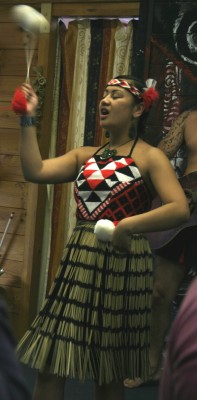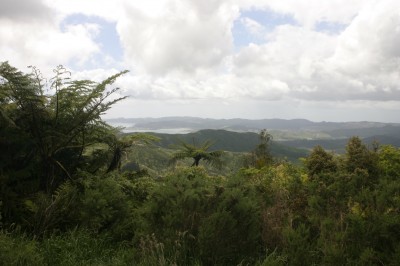It’s like a direct connection to Hell. Boiling, bubbling, and foul-smelling, the hot, sulphurous waters just under the surface in and around Rotorura create mysterious, steamy areas that look apocalyptic. Smelly steam rises from the Government Gardens in the centre of Rotorura town, where a park full of hot pools is situated; it rises from the chimneys of thermally heated motels; it rises from the sewers, and it rises from holes in the ground that appear here and there like rabbit warren saunas.
The bubbling hot sulphurous water pools sound like casseroles of water just before they are ready to boil over. Pools of luscious fine mud blop and plop like a coffee percolator that is just starting up. The sounds and the smells are not all. The water, earth and surrounding plants are coloured from a palette of sulphurous yellow, rusty red, murky grey, opaque turquoise, ashen white, and mossy green.
This is also the land of the Maori, New Zealand’s proud, original people. Like other Polynesians, they have their origins in Southeast Asia. Both men and women are often beautifully tattooed with individual, symbolic designs. When greeting each other in the traditional way, they gently press noses and exchange the breath of life. Not quite as gentle is the way they greet enemies. In this case they bulge their eyes and stick out their tongues as far as they can go, shout terrifically and show muscle almost like gorillas hammering their chests. It is quite daunting!
We were given an impression of this, as well as a beautiful love song and various games and dances in a local Maori village that has opened its doors to tourists. The village, called Whakarewarewa, is situated right in the midst of a huge area with steamy, sulphurous pools. This gives the village a rather mystic atmosphere.
The villagers use the hot water to dip food into for cooking, to bathe in and to wash clothes in. Living right on top of so much geothermal activity does pose practical problems, though. When people die, it is not possible to bury them six feet under. In fact, just digging down a couple of feet will reveal bubbling hot water. Instead, the dead are placed in stone coffins above ground, with the result that space for the dead in the village is at a premium.

















